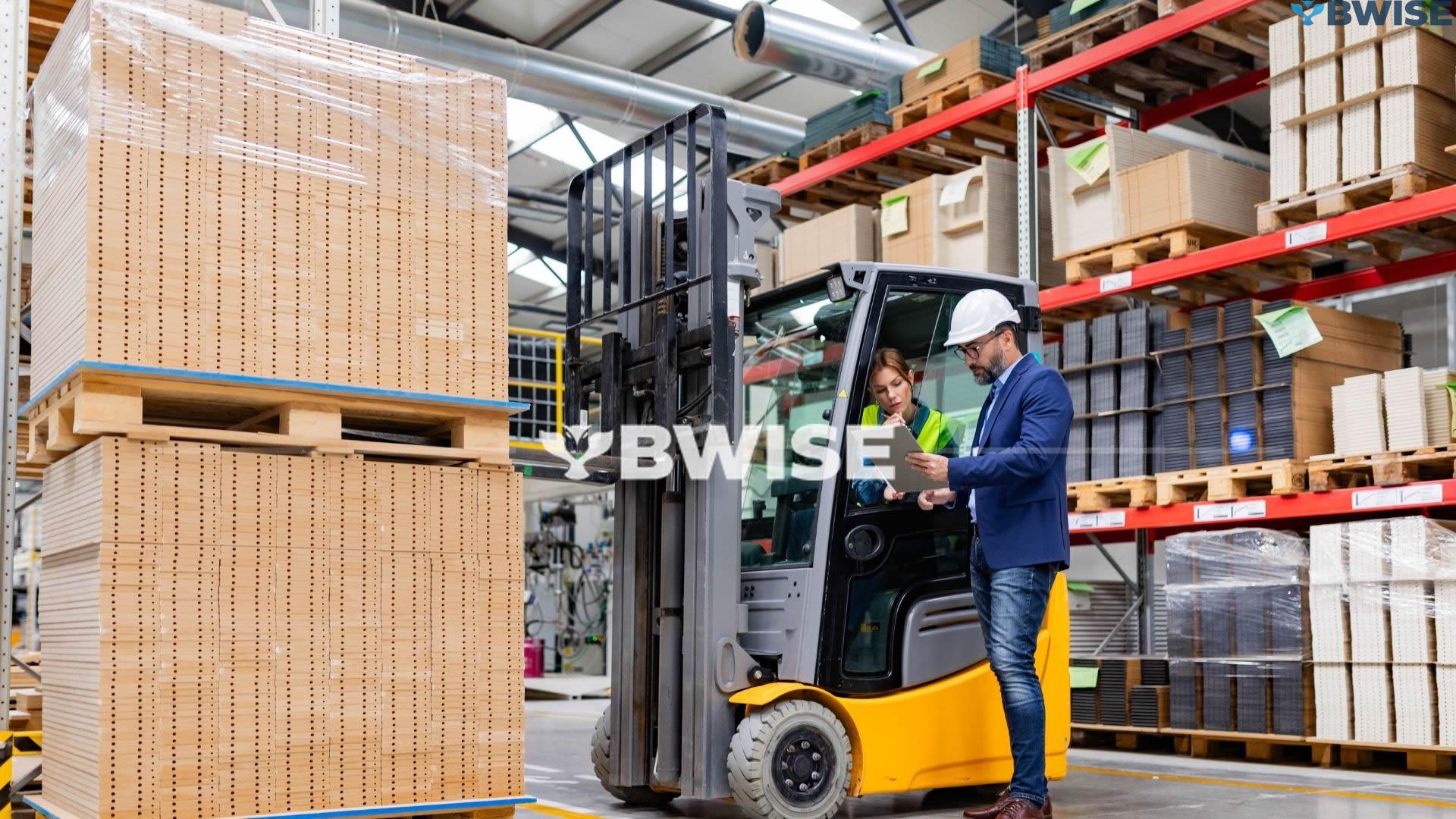A Warehouse Management System, or WMS, is a type of software. It makes running a warehouse easier. This software tracks inventory, fulfills orders, and enhances supply chain efficiency. WMSes are crucial for creating efficient supply chains. They oversee the journey of items, from arrival to dispatch, ensuring smooth flow. A WMS clarifies a lot. From current inventory levels to future needs, it is all clear. This makes stock management, verification, and storage better. Besides, it escalates the efficiency of managing warehouse movements at any time and location.

Key Takeaways
- A WMS is software that manages inventory control, order fulfillment, and supply chain optimization within a distribution facility.
- WMSes handle key functions like inventory tracking, picking, receiving, and storage to ensure efficient and cost-effective warehouse operations.
- A WMS provides real-time visibility into inventory levels, aids in forecasting, and advances material handling metrics.
- Cloud-based WMS deployments offer faster implementation, fewer upgrade hassles, and lower costs compared to traditional on-premises systems.
- Implementing a WMS can lead to improved customer experiences, faster fulfillment times, and increased operational efficiency.
Unveiling the Warehouse Management System (WMS)
A WMS’s main purpose is to streamline and reduce costs of goods moving in and out of warehouses. It aids with inventory tracking, selection, goods receipt, and storage. Essentially, it displays a company’s stock levels, supports planning, oversees inventory, and boosts resource utility.
The Vital Role of WMS in Supply Chain Management
An efficient WMS is vital for a thriving supply chain management (SCM), managing orders from initiation to completion. Suppose materials are not properly received or goods go missing, the entire system might hit speed bumps or halt. A WMS brings order to chaos by monitoring inventory, guaranteeing appropriate storage, and verifying shipping specifics.

WMS meaning: Streamlining Warehouse Operations
A system called Warehouse Management System, or WMS, uses cool stuff like RFID and barcodes. With these handy tools, locating items becomes a breeze! Storage and retrieval? That’s easier too in the warehouse. For workers, tools like pick-to-light or pick-to-voice are perfect to spot items.
Inventory Tracking and Material Handling
A warehouse’s efficiency is increased with a warehouse management system, or WMS. It comes in handy while packing and shipping items. It applies techniques including batch picking, zone, and wave. It’s fantastic that it also configures shipping information. This covers packing lists, invoices, and bills. It alerts the recipient before the item is delivered.
Order Fulfillment and Shipping Processes
Employers can evaluate employee performance using a WMS by using unique markers. Additionally, it keeps an eye on the areas where vehicles are dropped off and picked up, supervising tasks like cross-docking. Smoother incoming and outgoing deliveries result from this.
Labor Management and Performance Metrics
A WMS is key in making inventory work smoothly, filling orders, and improving the supply chain. It gives a live look at what is happening, tracks items well, and uses digital work processes. This meets the needs of today’s shopping world online and off.

Cloud-Based Warehouse Management Systems
The world of warehouse management is changing fast. Cloud-based systems are becoming key. They offer many benefits that make them popular in the supply chain field.
Benefits of Cloud-Based WMS Solutions
Cloud services eliminate the necessity for onsite devices and programs. All essential elements are accessible online, without hefty price tags. Such systems boost business efficiency, by optimizing the use of space, workforce, and technology. The cloud takes care of IT concerns, allowing companies to concentrate on their core duties without incurring extra tech expenses.
Rapid Implementation and Scalability
A cloud-based WMS kicks into action fast. Give it a couple of weeks, and it is good to go, beating old-school systems at the speed game. And guess what? As your business grows, so can these systems. You have a hectic period or major shifts? No problem. No need to spend on extra software or servers.
Seamless Integration with ERP (Enterprise Resource Planning) and Other Systems
Cloud systems are built to link effortlessly with different software. They smoothly mesh with popular systems such as ERP, MMS, and SCM. The data sharing they offer aligns with updated standards, which simplifies the connection process with other tools. Given their user-friendly interfaces, room for expansion, and the smooth integration with various systems, cloud WMS are climbing up the ladder. They’re bringing changes to the realm of supply chain software.
Types of Warehouse Management Systems
When managing a warehouse, you come across two main types of WMS. Some are self-sufficient while others integrate with ERP or SCM platforms. The standalone WMS deal exclusively with warehouse activities. On the other hand, linked WMS pair warehouse tasks with other business tasks such as accounting. ERP providers like BWISE often supply these.
Standalone vs. Integrated WMS
Standalone WMS pack a bunch of warehouse features. They’re user friendly, keeping their focus just on warehouse activities. An ERP or SCM system? No problem, they can connect! They might overlook features unrelated to warehousing though. One issue could be struggling to get data beyond the warehouse. Other side, SCM software with WMS modules can take in supply chain info. Warehouse decisions get an upgrade. They have more features than ERP WMS modules. Catch is their broad supply chain focus can make them tricky to set up and operate.
On-Premises vs. Cloud-Based Deployment
You can also choose where your WMS is deployed, either on-premises or in the cloud. On-premises WMS makes your company responsible for the system, with a big upfront cost. But this setup gives you more control. Cloud-based WMS, however, are managed by someone else, often the vendor or a cloud service. This spares you IT management and saves costs. It also makes implementing and upgrading easier.
Knowing about WMS options and what they offer can guide companies to the best choice. It depends on the business’s unique needs and the warehouse features required for smooth, cost-efficient operations.
Conclusion
Warehouse management systems aid in controlling inventory and fulfilling orders. They are essential in our speedy, interconnected shopping era. A WMS employs advanced tech to keep tabs on products, handle orders and mechanize tasks. This boosts business competence, curtails expenses, and enhances customer relations. Firms grappling with inventory blunders or slow delivery windows can resolve these issues with a WMS. This tool simplifies warehouse tasks and minimizes human slip-ups.
With improved tracking and picking procedures, orders become more precise. This saves bucks and satisfies customers more. Faced with an on-site or cloud WMS decision, you must weigh different pros. On-site WMS programs allow customization but demand more upkeep. Cloud options are simpler to upgrade and cheaper initially. Irrespective of your pick, it is vital to find a system that suits your requirements and aspirations. A-solid WMS system improves your warehouse operations and customer service. Need more information about our BWISE WISE WMS? You can request a demo here. Remember B1 BWISE!
